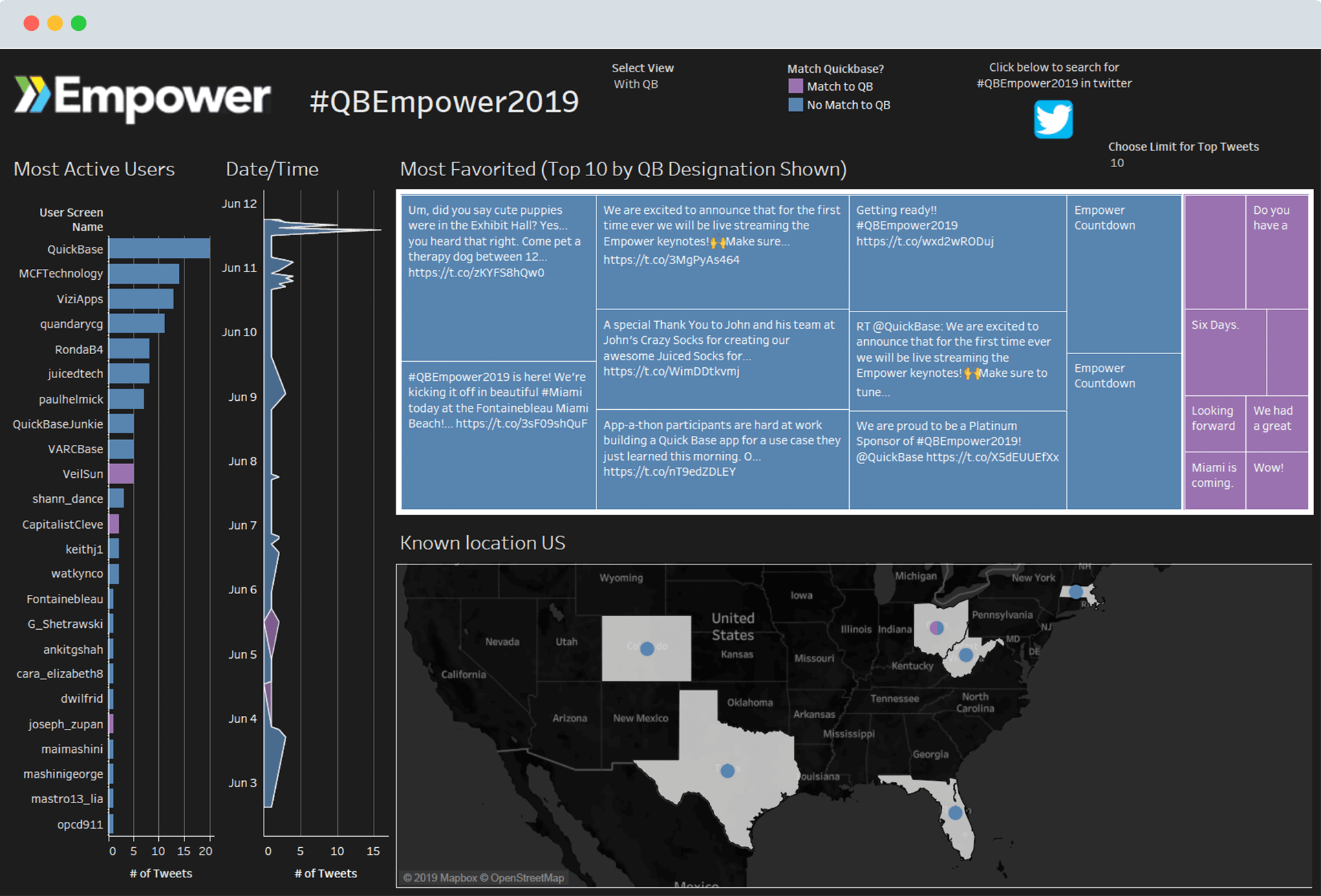Integrating Twitter & Tableau
Case Study

Challenge
A large user conference purchased a hash tag from Twitter for the event. Twitter has upwards of a half billion records created daily. It is a huge data reservoir, but that volume of information cannot be easily moved to other systems never mind a Platform as a Service offering that specializes in business process.
This allowed the attendees in real time to see the activity and comments from the large group of attendees with all the advantages of social media.
For a participating company, the Twitter feed provides a sense of the scale of interaction and the tone but it leaves a number of key areas empty.
- There is no way to identify comments from conference participants that have been interacted with.
- The demographics in a Twitter feed do not come through in the standard interface.
- Shifts in the activity over the multiple days of the event are not apparent in streaming feed.
Solution
During the event a custom Quick Base application was used to quickly capture the names and Twitter handles of the people that interacted with the Marketing Department. PaaSPorter polled that information in near real time generating a SQL data base of those contacts from the conference.
A Tableau dashboard was built that connected to the Quick Base data that was now in SQL and to Twitter. The data from both sources was now blended into a business intelligence tool in near real time.
Results
A rich geographic representation of the data was now available to the company with features that neither Twitter or Quick Base could provide on their own.
- From the geographic information in the Twitter profile the source of the Twitter users was displayed in full state by state profile.
- Inside of every state a color coded heat map showed the volume of Tweets and whether or not the user has interacted at the company booth.
- The data was linked back to Quick Base so with a single click the Marketing team could launch Quick Base and get to their own corporate data on the user.
The much richer and intuitive interface allows the marketing team to quickly follow and interact with their target audience holistically instead of as a Twitter user reading the feeds.

